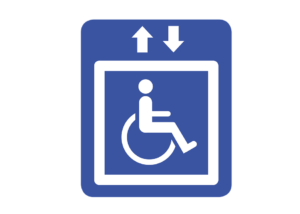Occupational disabilities, such as permanent disability, can arise from an accident (or occupational disease) or from common contingencies (non-work-related illness). If you find yourself in this situation, it is essential to have adequate information and to carry out the necessary procedures to obtain the corresponding benefits.
READ ABOUT WHAT'S NEW REGARDING TEMPORARY DISABILITY
The amount of the permanent disability pension varies according to the degree of disability:
Partial Permanent Disability (IPP): The indemnity will be equivalent to 24 monthly payments of the regulatory base set for temporary disability. Applying for permanent disability can be a complex process, so it is recommended to have proper advice. Total Permanent Disability (IPT): The amount of this benefit will be 55% of the latest regulatory bases. If you are over 55 years old, it can be increased by 20% when, due to your circumstances, it is presumed difficult to obtain employment in an activity different from the usual one. To calculate the pension for total permanent disability, it is advisable to consider available calculation examples and the associated consequences. Absolute Permanent Disability (IPA): The amount in this case is 100% of the latest regulatory bases. Additionally, it is important to consider the specific advantages and rights of those with this type of disability. Severe Disability (GI): The minimum pension will be 145% of the regulatory base.
There are circumstances in which it is possible to increase the amount of the disability pension:
If the disability is due to common contingencies, the pension can be increased by up to 20% in certain situations. It is important to consult specific information on this aspect, such as the situation assimilated to registration and the obligation to contribute. Check the information in this link. If the disability is due to a work accident, it is advisable to verify if it is due to a lack of safety measures. In this case, the amount of the pension can be increased by 50%. For more details, please consult this link on the work-related accident compensation and social security surcharges.
The first step is to study your medical reports and make an adequate assessment of the case. Our team of specialised doctors and lawyers can provide support in this process. We collaborate with a team of Spanish, French, English, and Italian-speaking doctors to ensure proper care. Having good communication with the treating physician is fundamental, as medical reports may be read by third parties, which is of great importance to support the disability application. Additionally, it is relevant to consider the resolution of permanent disability and how to properly demonstrate the disability.

Sometimes, an accident is not initially recognised as a work accident. Our labour lawyers defend the contingency of the accident before the administration and the mutual insurance company, both administratively and judicially, to benefit from the benefits derived from a work accident.
| Agoraphobia Albinism Alzheimer's Aniridia Rheumatoid Arthritis Cervical Osteoarthritis Ataxia Cancer Ischemic Heart Disease Chondromalacia Patella Depression Diabetes Dysthymia Cone-Rod Dystrophy Behçet's Disease Crohn's Disease and Ulcerative Colitis Liver Diseases Kidney Diseases Epilepsy COPD (Chronic Obstructive Pulmonary Disease) Multiple Sclerosis Scoliosis Ankylosing Spondylitis Degenerative Spondylosis Schizophrenia Foraminal Stenosis Fibromyalgia Cystic Fibrosis Disc Herniation |
Stroke Spinal Cord Injury Chronic Low Back Pain Lupus Maculopathy Migraine High Myopia Narcolepsy Ulnar Neuropathy Parkinson's Post-Polio Syndrome Lumbar Radiculopathy Diabetic Retinopathy Retinitis Pigmentosa Rhizarthrosis Goldmann-Favre Syndrome Marfan Syndrome Ménière's Disease Raynaud's Syndrome Sjögren's Syndrome Sudeck's Syndrome Tourette's Syndrome Carpal Tunnel Syndrome Subacromial Syndrome Syringomyelia and Arnold-Chiari Malformation Stargardt Disease Mixed Adjustment Disorder Bipolar Disorder Anxiety Disorder |
We hope this article is useful for better understanding occupational disabilities in Spain and Catalonia. Remember that each case is unique, so it is advisable to seek professional advice to carry out the procedures properly, including aspects such as transitioning from total permanent disability to retirement, summing the bases, and the date of the causal event.
Tell us briefly how we can help you so that we can assign the lawyer who can best advise you.
+34 932 020 256
+34 932 411 174
info@conesalegal.com
Avda. Diagonal 467, 6-1
08036 Barcelona (Spain)
